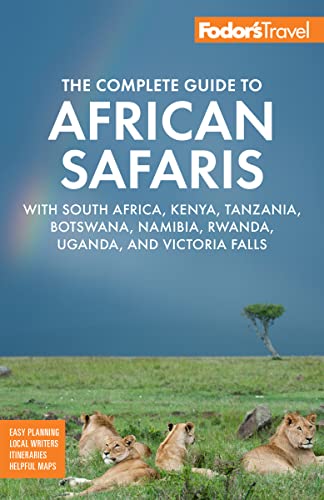Ngorongoro Crater ranks right up there among Africa's must-visit wildlife destinations: Serengeti, Masai Mara, Etosha, Kruger Park, and the Okavango Delta. One of only three UNESCO World Heritage sites in Tanzania (together with the Serengeti and the Selous Game Reserve), the Crater is often called the Eighth Wonder of the World.
It lies in the Biosphere Reserve of the Ngorongoro Conservation Area, which covers 8,300 square km (3,204 square miles) in northern Tanzania. This reserve was specifically planned to accommodate both the traditional Maasai communities and tourists. You'll see Maasai villagers grazing their sheep and cattle all over.
The Ngorongoro Crater lies in a cluster of other volcanoes (sometimes seen rather ominously smoking) that borders the Serengeti National Park to the north and west. It's actually a collapsed volcano or caldera. The original volcano, which may have been higher than Kilimanjaro, collapsed in on itself over time and now forms a perfect basin. Once inside you'll feel like you're at the bottom of a deep soup bowl with very steep sides. The basin, measuring 18 km (11 miles) in diameter, lies 500 meters (1,640 feet) below the rim, which towers above it at about 2,200 meters (7,217 feet) above sea level.
Believed to have formed some 2 million years ago, the Crater harbors an astonishing variety of landscapes—forests, peaks, craters, valleys, rivers, lakes, and plains—including the world-famous Olduvai Gorge, where some of our earliest human ancestors once hunted and gathered.
The very steep and bumpy drive into the crater begins high up in the forest. The only downside you might face is the sheer number of safari vehicles that all clamber into the crater at opening hours, creating often dusty drives through the crater itself. But once you have left the masses behind, the charm of this site slowly leaves you in awe. Although this lush highland forest looks exactly like a rain forest, it's not. It's a mist forest, which depends on a regular and abundant amount of mist and drizzle. If you look closely enough, you'll see particles of mist swirling like raindrops among the ancient trees. The aptly named pillarwood trees stand sentinel over the strangler figs, the croton trees, the highland bersama (a local evergreen), and purple wild tobacco flowers. The tree trunks and branches are home to thousands of epiphytes—specialized plants such as arboreal orchids and ferns—which cling to their hosts and absorb moisture with their own aerial roots. Look for the orchids among the curtains of Old Man's Beard, or hanging tree moss.
Monkeys, bushbuck, bush pigs, and elephants frequent the forest, although it's unlikely you'll see them. What you’ll see if you’re staying in one of the Crater lodges are well-mown lawns, which aren’t the result of hardworking gardeners but that of zebras and buffaloes, which after dark seek sanctuary from predators here. It's not dogs you hear barking after sundown but the warning calls of vigilant zebras and baboons. The Crater floor, dominated by a huge flamingo-filled alkaline lake, holds the highest concentration of predators in the world—lions, hyenas, jackals, and leopards. Cheetahs can occasionally be seen but fall prey to lions and hyenas, which the nervous and fragile cheetah is no match for. Big herds of plains game such as Thomson's and Grant's gazelles, impalas, giraffes, zebras, and wildebeests are easy meat for the thoroughly spoiled predators that need to expend very little energy to score a megameal. You'll probably see at least one pride of bloated lions lying on their backs, paws in air, stuffed and totally damaging their noble image as the King of Beasts. Make sure to ask your guide to point out a black or white rhino if he spots one. This is also a great place to take a boat safari down one of the hippo-dense rivers.
Bird life is also spectacular with some endemic species: the Rufous-tailed weaver, Schalow's wheatear, and large flocks of the incredibly beautiful crowned cranes. Because this is a continuous killing ground, you'll quickly become a vulture expert. If you're a birder, ask for a guide who knows his birds well, because not all the guides do.






